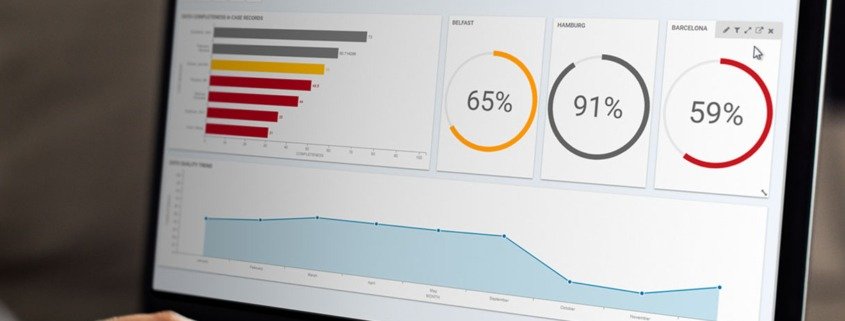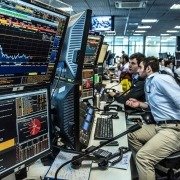Introduction to Liquidity Metrics
This paper offers a summary of indicators which may be used to demonstrate and examine liquidity developments in financial markets. These measures are employed in foreign markets, currency, and capital markets to exemplify their usefulness. Lots of measures have to be considered since there isn’t any single theoretically appropriate and approved measure to ascertain a market’s level of liquidity and since market-specific variables and peculiarities have to be considered.
Liquid markets are perceived as desired due to the advantages they supply, such as allocation and data efficiency. The advantage might not be accurate for investors jointly. As Keynes noted (1936, p. 160):”For the simple fact that every individual investor selects himself that his devotion is”liquid” (although this cannot be accurate for many investors jointly ) calms his nerves and leaves him much more prepared to conduct a threat.” Consequently, recent crises in financial markets, particularly, have sparked research about the way to gauge the condition of market liquidity and to better forecast and protect against liquidity crises.
This paper has two functions. It offers a summary of numerous distinct theories associated with liquid financial markets.
Analysts motivated this job. Like Borio (2000), who reports that at the run-up to financial disasters, markets frequently seem unnaturally liquid, but through times of anxiety, liquidity will vanish.
Market participants comprehend a financial advantage liquid, should they can sell considerable quantities of the advantage without impacting its price. Liquid financial assets are characterized by having trade costs; simple timely and trading payoff; and trades with limited effect on the market price. The significance of a few of the qualities of liquid markets can alter over time. During times of equilibrium, for example, the perception of the asset’s liquidity could reflect trade costs. During times of anxiety and principles that are changing, instantaneous price detection and adjustment to a new balance becomes more significant.
Liquid markets often display five attributes:
- tightness
- immediacy
- depth
- breadth
- resiliency
Tightness refers to trade costs, like the gap between buy and sell prices, such as the bid-ask spreads in markets, as well as costs. Immediacy signifies the rate with which orders could be implemented and, within this context too, settled, and consequently reflects, among other items, the efficacy of their trading, clearing, and settlement systems. Breadth implies that orders are big and numerous in bulk with minimal effect on prices. Resiliency is a feature of markets in which orders flow to fix order imbalances, which are inclined to move prices away from what fundamentals warrant. Depth refers to the existence of abundant orders, either actual or easily uncovered of potential buyers and sellers, both above and below the price at which a security now trades.
These conditions reflect various measurements of the degree to which an asset immediately and with no costs can be changed into legal tender.
In these conditions are to some degree overlapping. The majority of the available data do not correspond with those measurements, which disrupts their measurement. A variety of aspects have to be considered, because they influence the measurements of liquidity. They vary in the microstructure of this market, the bank’s implementation of its policy.
Knowing the microstructure of this market is crucial, when proxies, such as bid-ask spreads and turnover ratios, are utilized as liquidity signs. A market may be a platform which enables sellers and buyers to interact, a physical place. Professors have a world in your mind using a Walrasian auctioneer performing a price tätonnement procedure ensuring trading in market clearing prices. In summary, prices are a statistic. In the professional’s world, however, trading can occur in a variety of platforms (as an example, trader or auction markets) in non market clearing prices due to factors like market illiquidity.
It is contended that traders offer liquidity, because they offer a market. But because traders usually attempt to square their positions maintain a predetermined structural position prior to the close of the day they just “supply” liquidity by taking stock positions provided that they presume sellers and buyers will continue to emerge. In an auction market, sellers and prospective buyers distribute orders, and a digital system or agents will suit them. Auction markets are order or price could be continuous if there are trades and driven. Market intermediaries in auction systems can additionally take stock rankings in order to ease liquidity (e.g., so-called experts in broadly traded securities). Trading systems make it possible for participants to submit limit-orders, which enhance the liquidity. The intermediaries having access to the trading strategies can cover their costs by charging a commission or else they quote ask and bid prices to be paid by the sellers and buyers.
A distinction is made between the market, in which problems are offered, and also the market, where individuals who’ve Purchased the problems at the market can resell them. The market consequently provides liquidity.
It’s very important to comprehend the reporting demands of trades in markets prior to trading volumes may be utilized as a liquidity index.
An advantage is liquid if it can be converted to legal tender, which each definition is liquid. Some financial statements, such as require deposits, are almost perfectly liquid–provided that the credit institution is liquid as they may be converted without cost or delay to cash during regular conditions, while the conversion of different claims to legal tender can involve agents’ commissions, settlement delays, etc.. The emphasis is on trade costs and immediacy. It’s regarding the ease by which, in the lack of info changing an asset’s fundamental price quantities of this asset could be disposed of quickly at a sensible price.
A financial market’s liquidity is dependent upon the substitutability among the assets traded in a market, and the way liquid every one of those assets are. Whether there are issuers in the bond markets and equities markets, credit risk could protect against substitutability and result in segmentation of this market. Regardless of having the exact same issuer, human assets might nevertheless have distinct attributes, for example different maturities on the market for government securities, distinct voting rights for preference stocks, etc.. This aggregation problem leaves difficult an effort to employ measures with the goal of measuring a market’s liquidity.
This paper explains measures to judge an asset’s market liquidity with a view to evaluate whether a financial market, or in minimum a few of its sections, can be distinguished as liquid.
Our next article will classify liquidity measures in line with this size they greatest measure. Additionally, it discusses factors that might impact capability and their interpretation to catch a specified facet of liquidity. Issues related to assemble the measures will be also discussed. Section Ill uses the liquidity measures to the market, currency, and capital markets of a group of nations. Section IV lists a few of the qualitative aspects that are important to look at when assessing the liquidity measures across markets and states. Section V notes liquidity measures during times of stress may vary.
About Empirica
We are trading software company focused on developing the potential that cryptocurrencies bring to financial markets. Empirica is offering algorithmic trading tools used by professional investors and solutions for cryptocurrency liquidity, Robo Advisory software, crypto trading bots and trading software development services for companies from capital and cryptocurrency markets.
Schedule your appointment right now to learn more





